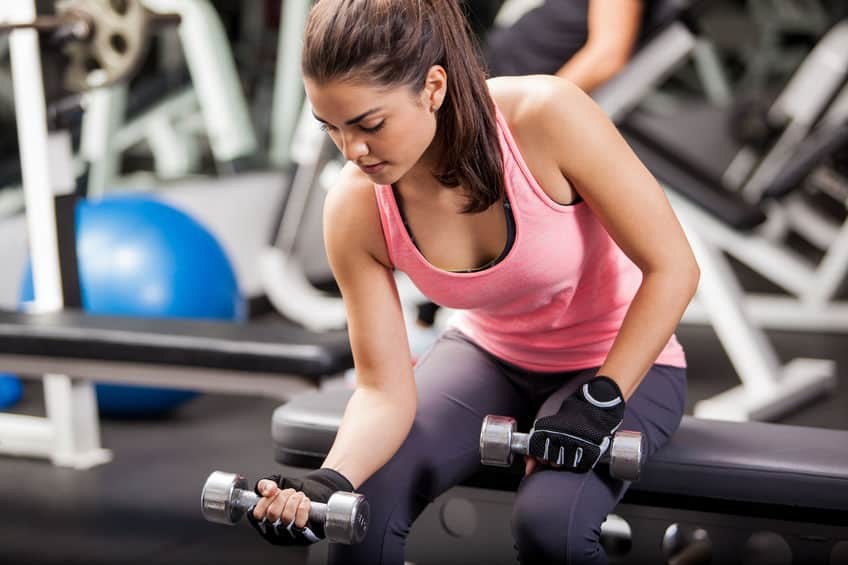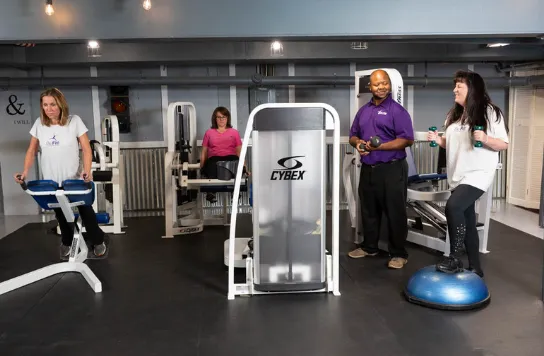Top 10 Exercise Tips for Beginners: Start Your Fitness Journey Right Starting an exercise routine can be both exciting and intimidating, especially if you’re new to fitness. To help you embark on your fitness journey with confidence, we’ve compiled ten essential exercise tips for beginners. These tips will guide you in creating a sustainable, effective, and enjoyable workout routine that sets you up for long-term success.

1. Set Clear and Realistic Goals
Setting clear and realistic fitness goals is crucial for staying motivated and tracking progress. Instead of aiming for drastic changes, focus on achievable objectives like:
- Exercising three times a week
- Walking 10,000 steps daily
- Losing 1-2 pounds per week
Having specific, measurable, attainable, relevant, and time-bound (SMART) goals will keep you motivated and provide a clear path to follow.
2. Start Slow and Gradually Increase Intensity
It’s important to start slow to avoid burnout and injury. Begin with low-intensity exercises and gradually increase the intensity and duration as your fitness level improves. For example:
- Start with 15-20 minutes of walking or light jogging
- Gradually add five minutes to your workouts each week
- Incorporate higher-intensity activities like brisk walking, cycling, or swimming as you build endurance
3. Choose Activities You Enjoy
Enjoyment is key to maintaining a consistent exercise routine. Experiment with different activities to find what you enjoy most, whether it’s:
- Walking or jogging in nature
- Joining a dance or aerobics class
- Cycling, swimming, or playing a sport
When you enjoy your workouts, they become something to look forward to rather than a chore.
4. Focus on Proper Form
Proper form is essential to prevent injuries and maximize the effectiveness of your workouts. Here are a few tips:
- Learn the Basics: Research or seek guidance from a trainer to understand the correct form for exercises.
- Start with Bodyweight Exercises: Master the form of basic movements like squats, lunges, and push-ups before adding weights.
- Use Mirrors: If possible, use mirrors to check your form during workouts.
5. Incorporate a Variety of Exercises
Variety not only keeps your workouts interesting but also ensures a well-rounded fitness routine. Aim to include:
- Cardiovascular Exercises: Running, cycling, swimming, or aerobics to improve heart health and endurance.
- Strength Training: Weight lifting, resistance bands, or bodyweight exercises to build muscle and strength.
- Flexibility and Balance: Yoga, Pilates, or stretching exercises to enhance flexibility and balance.
6. Prioritize Rest and Recovery
Rest and recovery are just as important as exercise. Allowing your body time to recover helps prevent injuries and promotes muscle growth. Tips for effective recovery include:
- Rest Days: Schedule at least one or two rest days per week.
- Sleep: Aim for 7-9 hours of quality sleep each night.
- Active Recovery: Engage in low-intensity activities like walking or gentle stretching on rest days.
7. Stay Hydrated and Eat Nutritiously
Proper nutrition and hydration support your workouts and overall health. Key points to consider:
- Hydrate: Drink plenty of water before, during, and after exercise.
- Balanced Diet: Consume a balanced diet rich in fruits, vegetables, lean proteins, and whole grains.
- Pre- and Post-Workout Nutrition: Eat a light snack with carbohydrates and protein before workouts and a balanced meal afterward to aid recovery.
8. Track Your Progress
Tracking your progress helps you stay motivated and see how far you’ve come. You can:
- Keep a Workout Journal: Record your exercises, duration, and how you feel after each session.
- Use Fitness Apps: Utilize apps or wearable devices to track your steps, workouts, and progress.
- Take Measurements: Track changes in weight, body measurements, or fitness levels over time.
9. Stay Consistent
Consistency is key to achieving long-term fitness goals. Create a workout schedule that fits your lifestyle and stick to it. Tips for staying consistent include:
- Set a Routine: Designate specific days and times for exercise.
- Find a Workout Buddy: Exercising with a friend can provide motivation and accountability.
- Be Flexible: If you miss a workout, don’t get discouraged. Adjust your schedule and keep moving forward.
10. Seek Professional Guidance
If you’re unsure where to start or need help with your routine, consider seeking professional guidance:
- Personal Trainers: A certified personal trainer can create a personalized workout plan and teach proper form.
- Fitness Classes: Join beginner-friendly fitness classes to learn new exercises and stay motivated.
- Online Resources: Utilize reputable fitness websites, videos, and apps for guidance and inspiration.
Track Your Progress
Why It Matters: Monitoring your progress keeps you motivated and helps you see how far you’ve come. It also allows you to adjust your goals as needed.
How to Do It: Keep a fitness journal or use a fitness app to log your workouts, track your goals, and record any changes in your fitness level. Celebrate your achievements, no matter how small, to stay encouraged.
Mix Up Your Routine
Why It Matters: Variety in your workouts prevents plateaus and keeps things interesting. It also ensures you’re working different muscle groups.
How to Do It: Alternate between different types of cardio (running, cycling, swimming), strength training, and flexibility exercises (yoga, stretching). Changing your routine every few weeks can also help you stay motivated and continue making progress.
READ MORE: A Step-by-Step Guide to Healthy Eating
Incorporate Strength Training
Why It Matters: Strength training builds muscle, increases metabolism, and enhances overall fitness. It also supports bone health and prevents muscle loss.
How to Do It: Include strength training exercises at least twice a week. Focus on all major muscle groups, including your legs, back, chest, shoulders, arms, and core. Start with bodyweight exercises like squats, push-ups, and planks, and gradually add weights as you get stronger.
Conclusion
Starting your fitness journey with the right approach is crucial for long-term success. By setting clear goals, starting slow, choosing enjoyable activities, focusing on proper form, warming up and cooling down, staying hydrated, listening to your body, incorporating strength training, mixing up your routine, and tracking your progress, you can build a sustainable and effective exercise regimen. Remember, consistency is key, and the most important thing is to keep moving and enjoy the process. Top 10 Exercise Tips for Beginners: Start Your Fitness Journey Right

